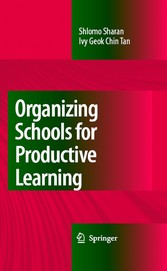
Organizing Schools for Productive Learning

von: Shlomo Sharan, Ivy Geok Chin Tan
Springer-Verlag, 2008
ISBN: 9781402083952
Sprache: Englisch
117 Seiten, Download: 545 KB
Format: PDF, auch als Online-Lesen







